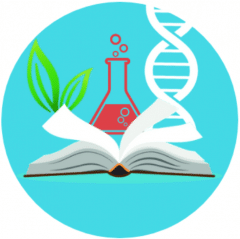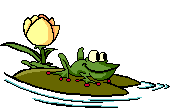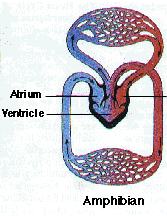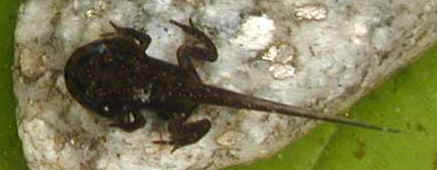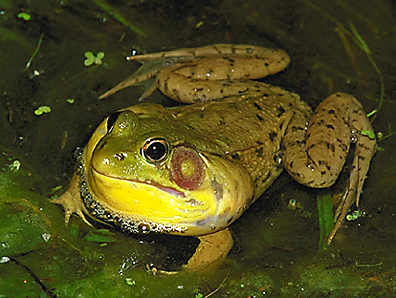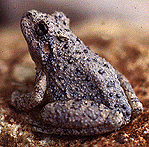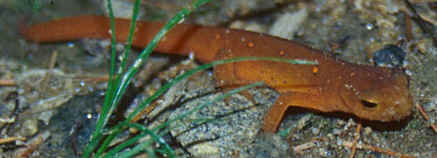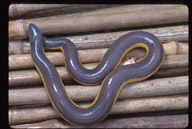| Bullfrog Skeleton Reconstruction |
Introduction:
The skeleton of the frog consists chiefly of bony and cartilaginous elements. The functions of a skeleton include providing support for the body, protection of delicate internal organs and attachment surfaces for muscles. In vertebrates, the axial skeleton consists of the skull, vertebral column, sternum (breast bone) and ribs (which are not present in amphibians). The vertebral column of frogs is made up of 10 vertebrae, the first of which (called the atlas) articulates with the base of the skull. The atlas is the only cervical vertebra in the frog. The next seven vertebrae are abdominal vertebrae, which is the large sacrum with two strong transverse processes that join with the ileum. The last vertebra is the long and highly modified urostyle. Note: Most vertebrates have a tail supported by caudal vertebrate, but frogs and toads are atypical in that they lack any tail and are therefore called anurans (“tail less amphibians”).
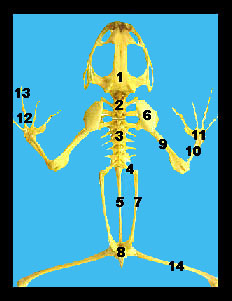 | 1. Skull
|
The appendicular skeleton includes the limbs and the pectoral and pelvic girdles that support them. In most vertebrates the forelimbs consist of three major bones — the humerus, radius and ulna, along with the smaller bones of the hand (carpals, metacarpals and phalanges). Note that in the frog the radius and ulna have become fused into a single bone, the radio-ulna. Likewise, the hindlimbs consist of three major bones — the femur, tibia and fibula, along with the smaller bones that make up the feet (tarsals, metatarsals and phalanges). Once again, in frogs and toads the tibia and fibula have become fused into a single bone, the tibio-fibula. The pectoral girdle consists of four pairs of bones (the suprascapula, scapula, coracoid, and clavicle). The last three pairs are connected to the sternum. In frogs, the pelvic girdle, which supports the hindlimbs, is formed by the fusion of the ilium, ischium and non-ossified pubis. Each femur fits into a socket on the pelvic girdle called an acetabulum. Note that the pelvic girdle and limb structure are well adapted for giving a powerful, synchronous thrust of both hind limbs in swimming and jumping
Objective:
By reassembling an amphibian skeleton, students will learn the bones and modifications of a vertebrate.
Materials:
Dermestid beetles, small aquarium with air-vented lid, dermestid bedding, food, & water supply, freeze-dried bullfrogs, tweezers, small container with lid for bones, 20% H2O2, thin piece of wood, paints, and glue.
Procedure:
- Place the freeze dried frog into a small aquarium of dermestid beetles.
- Leave the frog skeleton in the aquarium for several days to several weeks until all flesh has been stripped from the skeleton.
- Carefully remove all bones from the aquarium and use forceps to carefully pull away any flesh that remains..
- Rinse the bones in running water thoroughly.
- Bleach the bone in 20% hydrogen peroxide solution until the bones appear white.
- Dry the bones and articulate them. (use the above diagram to help in the arrangement of the bones.)
- Bones should be mounted on a thin piece of wood.
- You may be creative and place your frog in a scene of your choosing — playing football or basketball, swimming in a pond, practicing ballet, etc.
Examples:
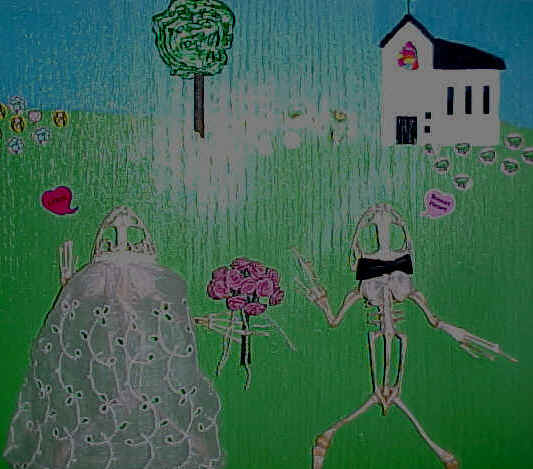 |  | 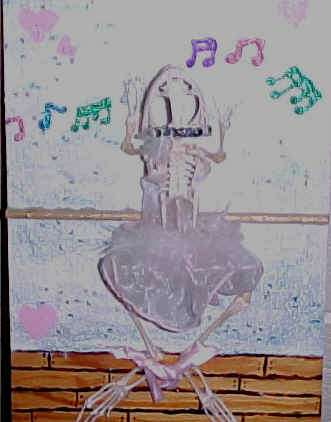 |
